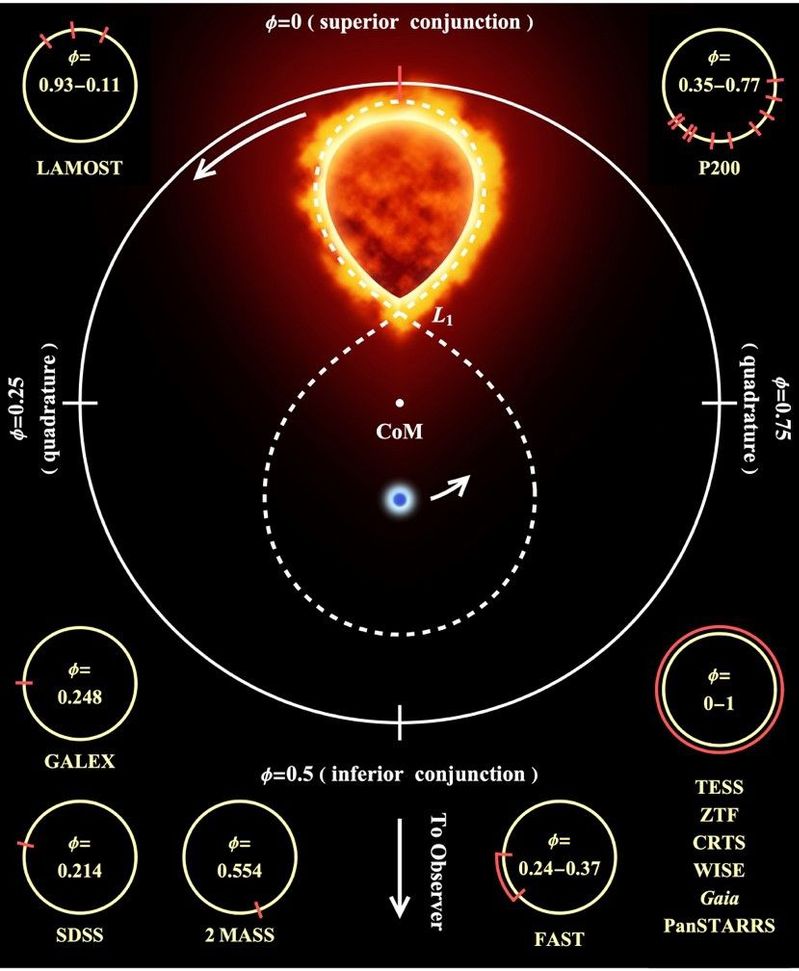[Nature Astronomy] A Dynamically Discovered and Characterized Non-Accreting Neutron Star–M Dwarf Binary Candidate
Abstract: Typically, neutron stars are discovered by observations at radio, X-ray or gamma-ray wavelengths. Unlike radio pulsar surveys and X-ray observations, optical time-domain surveys can unveil and characterize exciting but less explored non-accreting and/or non-beaming neutron stars in binaries. Here we report the discovery of such a neutron star candidate using the LAMOST spectroscopic survey. The candidate, designated LAMOST J112306.9 + 400736, is in a single-lined spectroscopic binary containing an optically visible M star. The star’s large radial velocity variation and ellipsoidal variations indicate a relatively massive unseen companion. Utilizing follow-up spectroscopy from the Palomar 200 in. telescope and high-precision photometry from the Transiting Exoplanet Survey Satellite, we measure a companion mass of \(1.2{4}_{-0.03}^{+0.03}\,{M}_{\odot }\). Main-sequence stars with this mass are ruled out, leaving a neutron star or a massive white dwarf. Although a massive white dwarf cannot be excluded, the lack of UV excess radiation from the companion supports the neutron star hypothesis. Deep radio observations with the Five-hundred-meter Aperture Spherical radio Telescope (FAST) yielded no detections of either pulsed or persistent emission. J112306.9 + 400736 is not detected in numerous X-ray and gamma-ray surveys, suggesting that the neutron star candidate is not currently accreting and pulsing. Our work exemplifies the capability of discovering compact objects in non-accreting close binaries by synergizing optical time-domain spectroscopy and high-cadence photometry.
Link: https://www.nature.com/articles/s41550-022-01766-0






